Update
I have made an improvement of the algorithm that it takes an average of O(M + N^2) and memory needs of O(M+N). Mainly is the same that the protocol described below, but to calculate the possible factors A,K for ech diference D, I preload a table. This table takes less than a second to be constructed for M=10^7.
I have made a C implementation that takes less than 10minutes to solve N=10^5 diferent random integer elements.
Here is the source code in C: To execute just do: gcc -O3 -o findgeo findgeo.c
#include <stdio.h>
#include <stdlib.h>
#include <math.h>
#include <memory.h>
#include <time.h>
struct Factor {
int a;
int k;
struct Factor *next;
};
struct Factor *factors = 0;
int factorsL=0;
void ConstructFactors(int R) {
int a,k,C;
int R2;
struct Factor *f;
float seconds;
clock_t end;
clock_t start = clock();
if (factors) free(factors);
factors = malloc (sizeof(struct Factor) *((R>>1) + 1));
R2 = R>>1 ;
for (a=0;a<=R2;a++) {
factors[a].a= a;
factors[a].k=1;
factors[a].next=NULL;
}
factorsL=R2+1;
R2 = floor(sqrt(R));
for (k=2; k<=R2; k++) {
a=1;
C=a*k*(k+1);
while (C<R) {
C >>= 1;
f=malloc(sizeof(struct Factor));
*f=factors[C];
factors[C].a=a;
factors[C].k=k;
factors[C].next=f;
a++;
C=a*k*(k+1);
}
}
end = clock();
seconds = (float)(end - start) / CLOCKS_PER_SEC;
printf("Construct Table: %f\n",seconds);
}
void DestructFactors() {
int i;
struct Factor *f;
for (i=0;i<factorsL;i++) {
while (factors[i].next) {
f=factors[i].next->next;
free(factors[i].next);
factors[i].next=f;
}
}
free(factors);
factors=NULL;
factorsL=0;
}
int ipow(int base, int exp)
{
int result = 1;
while (exp)
{
if (exp & 1)
result *= base;
exp >>= 1;
base *= base;
}
return result;
}
void findGeo(int **bestSolution, int *bestSolutionL,int *Arr, int L) {
int i,j,D;
int mustExistToBeBetter;
int R=Arr[L-1]-Arr[0];
int *possibleSolution;
int possibleSolutionL=0;
int exp;
int NextVal;
int idx;
int kMax,aMax;
float seconds;
clock_t end;
clock_t start = clock();
kMax = floor(sqrt(R));
aMax = floor(R/2);
ConstructFactors(R);
*bestSolutionL=2;
*bestSolution=malloc(0);
possibleSolution = malloc(sizeof(int)*(R+1));
struct Factor *f;
int *H=malloc(sizeof(int)*(R+1));
memset(H,0, sizeof(int)*(R+1));
for (i=0;i<L;i++) {
H[ Arr[i]-Arr[0] ]=1;
}
for (i=0; i<L-2;i++) {
for (j=i+2; j<L; j++) {
D=Arr[j]-Arr[i];
if (D & 1) continue;
f = factors + (D >>1);
while (f) {
idx=Arr[i] + f->a * f->k - Arr[0];
if ((f->k <= kMax)&& (f->a<aMax)&&(idx<=R)&&H[idx]) {
if (f->k ==1) {
mustExistToBeBetter = Arr[i] + f->a * (*bestSolutionL);
} else {
mustExistToBeBetter = Arr[i] + f->a * f->k * (ipow(f->k,*bestSolutionL) - 1)/(f->k-1);
}
if (mustExistToBeBetter< Arr[L-1]+1) {
idx= floor(mustExistToBeBetter - Arr[0]);
} else {
idx = R+1;
}
if ((idx<=R)&&H[idx]) {
possibleSolution[0]=Arr[i];
possibleSolution[1]=Arr[i] + f->a*f->k;
possibleSolution[2]=Arr[j];
possibleSolutionL=3;
exp = f->k * f->k * f->k;
NextVal = Arr[j] + f->a * exp;
idx=NextVal - Arr[0];
while ( (idx<=R) && H[idx]) {
possibleSolution[possibleSolutionL]=NextVal;
possibleSolutionL++;
exp = exp * f->k;
NextVal = NextVal + f->a * exp;
idx=NextVal - Arr[0];
}
if (possibleSolutionL > *bestSolutionL) {
free(*bestSolution);
*bestSolution = possibleSolution;
possibleSolution = malloc(sizeof(int)*(R+1));
*bestSolutionL=possibleSolutionL;
kMax= floor( pow (R, 1/ (*bestSolutionL) ));
aMax= floor(R / (*bestSolutionL));
}
}
}
f=f->next;
}
}
}
if (*bestSolutionL == 2) {
free(*bestSolution);
possibleSolutionL=0;
for (i=0; (i<2)&&(i<L); i++ ) {
possibleSolution[possibleSolutionL]=Arr[i];
possibleSolutionL++;
}
*bestSolution = possibleSolution;
*bestSolutionL=possibleSolutionL;
} else {
free(possibleSolution);
}
DestructFactors();
free(H);
end = clock();
seconds = (float)(end - start) / CLOCKS_PER_SEC;
printf("findGeo: %f\n",seconds);
}
int compareInt (const void * a, const void * b)
{
return *(int *)a - *(int *)b;
}
int main(void) {
int N=100000;
int R=10000000;
int *A = malloc(sizeof(int)*N);
int *Sol;
int SolL;
int i;
int *S=malloc(sizeof(int)*R);
for (i=0;i<R;i++) S[i]=i+1;
for (i=0;i<N;i++) {
int r = rand() % (R-i);
A[i]=S[r];
S[r]=S[R-i-1];
}
free(S);
qsort(A,N,sizeof(int),compareInt);
/*
int step = floor(R/N);
A[0]=1;
for (i=1;i<N;i++) {
A[i]=A[i-1]+step;
}
*/
findGeo(&Sol,&SolL,A,N);
printf("[");
for (i=0;i<SolL;i++) {
if (i>0) printf(",");
printf("%d",Sol[i]);
}
printf("]\n");
printf("Size: %d\n",SolL);
free(Sol);
free(A);
return EXIT_SUCCESS;
}
Demostration
I will try to demonstrate that the algorithm that I proposed is  in average for an equally distributed random sequence. I’m not a mathematician and I am not used to do this kind of demonstrations, so please fill free to correct me any error that you can see.
in average for an equally distributed random sequence. I’m not a mathematician and I am not used to do this kind of demonstrations, so please fill free to correct me any error that you can see.
There are 4 indented loops, the two firsts are the N^2 factor. The M is for the calculation of the possible factors table).
The third loop is executed only once in average for each pair. You can see this checking the size of the pre-calculated factors table. It’s size is M when N->inf. So the average steps for each pair is M/M=1.
So the proof happens to check that the forth loop. (The one that traverses the good made sequences is executed less that or equal O(N^2) for all the pairs.
To demonstrate that, I will consider two cases: one where M>>N and other where M ~= N. Where M is the maximum difference of the initial array: M= S(n)-S(1).
For the first case, (M>>N) the probability to find a coincidence is p=N/M. To start a sequence, it must coincide the second and the b+1 element where b is the length of the best sequence until now. So the loop will enter  times. And the average length of this series (supposing an infinite series) is
times. And the average length of this series (supposing an infinite series) is  . So the total number of times that the loop will be executed is
. So the total number of times that the loop will be executed is  . And this is close to 0 when M>>N. The problem here is when M~=N.
. And this is close to 0 when M>>N. The problem here is when M~=N.
Now lets consider this case where M~=N. Lets consider that b is the best sequence length until now. For the case A=k=1, then the sequence must start before N-b, so the number of sequences will be N-b, and the times that will go for the loop will be a maximum of (N-b)*b.
For A>1 and k=1 we can extrapolate to  where d is M/N (the average distance between numbers). If we add for all A’s from 1 to dN/b then we see a top limit of:
where d is M/N (the average distance between numbers). If we add for all A’s from 1 to dN/b then we see a top limit of:

For the cases where k>=2, we see that the sequence must start before  , So the loop will enter an average of
, So the loop will enter an average of  and adding for all As from 1 to dN/k^b, it gives a limit of
and adding for all As from 1 to dN/k^b, it gives a limit of

Here, the worst case is when b is minimum. Because we are considering minimum series, lets consider a very worst case of b= 2 so the number of passes for the 4th loop for a given k will be less than
 .
.
And if we add all k’s from 2 to infinite will be:

So adding all the passes for k=1 and k>=2, we have a maximum of:

Note that d=M/N=1/p.
So we have two limits, One that goes to infinite when d=1/p=M/N goes to 1 and other that goes to infinite when d goes to infinite. So our limit is the minimum of both, and the worst case is when both equetions cross. So if we solve the equation:

we see that the maximum is when d=1.353
So it is demonstrated that the forth loops will be processed less than 1.55N^2 times in total.
Of course, this is for the average case. For the worst case I am not able to find a way to generate series whose forth loop are higher than O(N^2), and I strongly believe that they does not exist, but I am not a mathematician to prove it.
Old Answer
Here is a solution in average of O((n^2)*cube_root(M)) where M is the difference between the first and last element of the array. And memory requirements of O(M+N).
1.- Construct an array H of length M so that M[i - S[0]]=true if i exists in the initial array and false if it does not exist.
2.- For each pair in the array S[j], S[i] do:
2.1 Check if it can be the first and third elements of a possible solution. To do so, calculate all possible A,K pairs that meet the equation S(i) = S(j) + AK + AK^2. Check this SO question to see how to solve this problem. And check that exist the second element: S[i]+ A*K
2.2 Check also that exist the element one position further that the best solution that we have. For example, if the best solution that we have until now is 4 elements long then check that exist the element A[j] + AK + AK^2 + AK^3 + AK^4
2.3 If 2.1 and 2.2 are true, then iterate how long is this series and set as the bestSolution until now is is longer that the last.
Here is the code in javascript:
function getAKs(A) {
if (A / 2 != Math.floor(A / 2)) return [];
var solution = [];
var i;
var SR3 = Math.pow(A, 1 / 3);
for (i = 1; i <= SR3; i++) {
var B, C;
C = i;
B = A / (C * (C + 1));
if (B == Math.floor(B)) {
solution.push([B, C]);
}
B = i;
C = (-1 + Math.sqrt(1 + 4 * A / B)) / 2;
if (C == Math.floor(C)) {
solution.push([B, C]);
}
}
return solution;
}
function getBestGeometricSequence(S) {
var i, j, k;
var bestSolution = [];
var H = Array(S[S.length-1]-S[0]);
for (i = 0; i < S.length; i++) H[S[i] - S[0]] = true;
for (i = 0; i < S.length; i++) {
for (j = 0; j < i; j++) {
var PossibleAKs = getAKs(S[i] - S[j]);
for (k = 0; k < PossibleAKs.length; k++) {
var A = PossibleAKs[k][0];
var K = PossibleAKs[k][17];
var mustExistToBeBetter;
if (K==1) {
mustExistToBeBetter = S[j] + A * bestSolution.length;
} else {
mustExistToBeBetter = S[j] + A * K * (Math.pow(K,bestSolution.length) - 1)/(K-1);
}
if ((H[S[j] + A * K - S[0]]) && (H[mustExistToBeBetter - S[0]])) {
var possibleSolution=[S[j],S[j] + A * K,S[i]];
exp = K * K * K;
var NextVal = S[i] + A * exp;
while (H[NextVal - S[0]] === true) {
possibleSolution.push(NextVal);
exp = exp * K;
NextVal = NextVal + A * exp;
}
if (possibleSolution.length > bestSolution.length) {
bestSolution = possibleSolution;
}
}
}
}
}
return bestSolution;
}
//var A= [ 1, 2, 3,5,7, 15, 27, 30,31, 81];
var A=[];
for (i=1;i<=3000;i++) {
A.push(i);
}
var sol=getBestGeometricSequence(A);
$("#result").html(JSON.stringify(sol));
You can check the code here: http://jsfiddle.net/6yHyR/1/
I maintain the other solution because I believe that it is still better when M is very big compared to N.
 in average for an equally distributed random sequence. I’m not a mathematician and I am not used to do this kind of demonstrations, so please fill free to correct me any error that you can see.
in average for an equally distributed random sequence. I’m not a mathematician and I am not used to do this kind of demonstrations, so please fill free to correct me any error that you can see. times. And the average length of this series (supposing an infinite series) is
times. And the average length of this series (supposing an infinite series) is  . So the total number of times that the loop will be executed is
. So the total number of times that the loop will be executed is  . And this is close to 0 when M>>N. The problem here is when M~=N.
. And this is close to 0 when M>>N. The problem here is when M~=N. where d is M/N (the average distance between numbers). If we add for all A’s from 1 to dN/b then we see a top limit of:
where d is M/N (the average distance between numbers). If we add for all A’s from 1 to dN/b then we see a top limit of:
 , So the loop will enter an average of
, So the loop will enter an average of  and adding for all As from 1 to dN/k^b, it gives a limit of
and adding for all As from 1 to dN/k^b, it gives a limit of 
 .
. 

